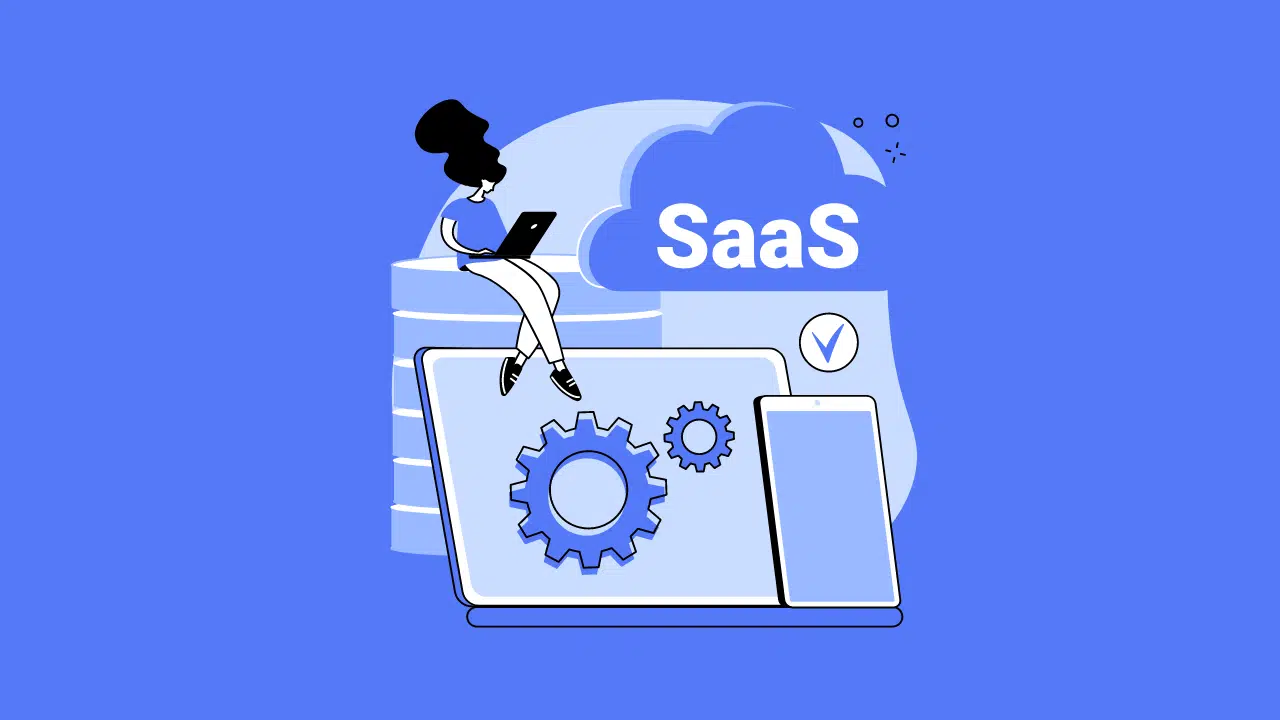Introduction
Welcome to the world of SaaS (Software as a Service), where businesses are revolutionizing the way software is delivered and accessed. SaaS companies have been gaining tremendous popularity, offering a wide range of software solutions to customers through the cloud. However, running a successful SaaS business requires careful attention to various financial metrics, including gross margin.
Gross margin is a key performance indicator that provides valuable insights into the financial health of a SaaS company. It measures the profitability of a company’s core operations by determining the percentage of revenue left after accounting for the direct costs associated with delivering the software service. In other words, gross margin represents the amount of money a SaaS company can retain to cover its operating expenses and generate profits.
Understanding the significance of gross margin in the context of SaaS is essential for entrepreneurs, investors, and industry professionals alike. It not only helps assess the financial viability of a SaaS business but also provides a benchmark for comparison against industry peers and competitors.
In this article, we will dive deeper into the concept of gross margin, explore why it is crucial in the SaaS industry, discuss the factors that can impact gross margins, and provide insights into what constitutes a good gross margin for a SaaS company. Additionally, we will outline strategies that SaaS businesses can implement to improve their gross margin and achieve sustainable growth.
So, if you are interested in gaining a comprehensive understanding of how gross margin influences the financial performance of SaaS companies, and how you can optimize it for success, read on!
What is Gross Margin?
Gross margin is a fundamental financial metric that provides insight into the profitability of a business. It represents the percentage of revenue that remains after deducting the direct costs associated with producing or delivering a product or service. For SaaS companies, gross margin measures the profitability of providing software services to customers through the cloud.
The formula for calculating gross margin is simple:
Gross Margin = (Revenue – Cost of Goods Sold) / Revenue
The revenue in this equation refers to the total sales generated by the SaaS company. The cost of goods sold includes expenses directly related to delivering the software service, such as hosting fees, customer support costs, and any third-party licensing fees.
By calculating the gross margin, SaaS companies can determine the proportion of revenue available to cover overhead costs and generate a profit. Higher gross margins indicate greater profitability, as a larger percentage of revenue is retained after accounting for direct costs. Conversely, lower gross margins suggest that a significant portion of revenue is consumed by the expenses associated with providing the software service.
It is important to note that gross margin should not be confused with net profit margin. While gross margin only considers the direct costs directly related to delivering the software service, net profit margin takes into account all other expenses, including marketing, sales, research and development, and general administrative costs.
Understanding the gross margin allows SaaS companies to assess their financial viability, sustainability, and overall performance. It provides valuable insights into the efficiency of operations and serves as a key metric for evaluating the company’s revenue generation and cost management capabilities. By monitoring and analyzing gross margin trends over time, SaaS companies can identify areas where cost optimization is required and make informed decisions to improve profitability.
Why is Gross Margin Important for SaaS Companies?
Gross margin plays a crucial role in the success and sustainability of SaaS companies. It provides valuable insights into the financial health of the business and helps measure profitability. Here are several reasons why gross margin is important for SaaS companies:
1. Measure of Profitability: Gross margin indicates the profitability of a SaaS company’s operations. It reflects how efficiently the company delivers its software services and generates revenue. A high gross margin suggests that the company is generating more revenue compared to the direct costs of providing the service, resulting in stronger profitability.
2. Financial Health Indicator: Gross margin serves as an indicator of the overall financial health of a SaaS company. It helps gauge the company’s ability to cover operating expenses and generate enough profit to sustain growth. A healthy gross margin indicates that the company is in a strong position to meet its financial obligations and invest in further development.
3. Comparison Against Industry Peers: Gross margin allows SaaS companies to compare their financial performance against industry peers. By benchmarking their gross margin against similar companies, SaaS businesses can assess their relative competitiveness and identify areas for improvement. This comparison provides a broader understanding of the industry landscape and helps set realistic financial goals.
4. Investor Confidence: Gross margin is a crucial metric that investors consider when evaluating the financial viability of a SaaS company. A higher gross margin indicates a more attractive investment opportunity, as it suggests that the company has a profitable business model and strong revenue generation capabilities. Investors are more likely to be confident in a SaaS company with a healthy gross margin, which can lead to increased funding opportunities.
5. Cost Optimization: Monitoring gross margin helps SaaS companies identify inefficiencies and areas for cost optimization. By analyzing the direct costs associated with delivering the software service, companies can identify opportunities to reduce expenses without compromising the quality of the service. This can lead to improved profitability and financial sustainability in the long run.
In summary, gross margin is a crucial metric for SaaS companies as it measures profitability, indicates financial health, allows for industry benchmarking, instills investor confidence, and provides an opportunity for cost optimization. By paying close attention to gross margin and taking appropriate actions to optimize it, SaaS companies can position themselves for long-term success and sustained growth in the competitive marketplace.
Factors that Affect Gross Margin in SaaS
Gross margin in the SaaS industry can be influenced by various factors, both internal and external. Understanding these factors is crucial for SaaS companies to optimize their gross margin and improve overall profitability. Here are some key factors that can impact gross margin:
1. Pricing Strategy: The pricing strategy adopted by a SaaS company has a significant impact on gross margin. Setting the right price for the software service requires finding a balance between customer value and profitability. A well-designed pricing strategy that takes into account market demand, competition, and customer willingness to pay can contribute to higher gross margins.
2. Customer Acquisition Costs: The costs associated with acquiring new customers can have a direct impact on gross margin. High customer acquisition costs, such as marketing and sales expenses, can reduce the profitability of each customer. SaaS companies need to carefully manage these costs to ensure they are generating enough revenue from customers to cover the acquisition expenses and maintain a healthy gross margin.
3. Churn Rate: Churn rate, which refers to the percentage of customers who cancel their subscriptions, can significantly affect gross margin. High churn rates can result in revenue loss and increased customer acquisition costs to replace those lost customers. By reducing churn through effective customer retention strategies, SaaS companies can improve their gross margin by maximizing revenue from existing customers.
4. Economies of Scale: SaaS companies can benefit from economies of scale, which can positively impact gross margin. As the customer base grows, the costs associated with delivering the software service can be spread out, resulting in lower direct costs per customer. This allows the company to generate higher gross margin percentages and increase profitability.
5. Cost of Infrastructure and Technology: The infrastructure and technology required to deliver the software service can affect gross margin. SaaS companies need to invest in robust infrastructure and technology to ensure efficient service delivery, customer support, and data security. However, the cost of these investments can impact gross margin, especially in the early stages of the business. By optimizing infrastructure and technology costs, companies can improve gross margin over time.
6. Pricing Model: The pricing model chosen by a SaaS company can impact gross margin. Different pricing models, such as subscription-based, usage-based, or tiered pricing, have varying impacts on direct costs. Companies need to carefully analyze their pricing models and ensure they align with the value delivered to customers while maintaining a healthy gross margin.
By considering these factors, SaaS companies can identify areas for improvement and implement strategies to optimize their gross margin. It is essential to regularly monitor and analyze these factors to ensure sustained profitability and long-term success in the highly competitive SaaS industry.
The Benchmark for Good Gross Margin in SaaS
When it comes to evaluating the gross margin of a SaaS company, there is no one-size-fits-all benchmark. The ideal gross margin can vary depending on factors such as the industry, product complexity, pricing model, and competitive landscape. However, some general benchmarks can provide guidance for SaaS companies to assess their gross margin performance.
In the SaaS industry, a good gross margin typically falls within the range of 70% to 80%. This means that for every dollar of revenue generated, the company retains 70 to 80 cents after accounting for the direct costs associated with delivering the software service. Gross margins above this range indicate a highly profitable business model with a strong competitive advantage, while margins below the range may suggest challenges in generating sufficient profits.
It is important to note that specific factors within a SaaS company’s business model can influence what is considered a good gross margin. For example, SaaS companies that require significant upfront investment in research and development or infrastructure might have lower initial gross margins but expect to increase them over time as they achieve economies of scale.
Furthermore, it is crucial to consider the industry context and competitive landscape. Some industries, such as enterprise software, may have higher average gross margins due to factors like higher customer budgets and complex product offerings. Therefore, SaaS companies should take into account industry-specific benchmarks when evaluating their gross margin performance.
While benchmarking against industry averages can provide a helpful reference point, it is equally important for SaaS companies to assess their own historical performance and set realistic goals based on their unique circumstances. It is essential to consider factors such as growth stage, product maturity, target market, and pricing strategy.
Ultimately, a good gross margin in SaaS depends on striking the right balance between profitability and competitiveness. SaaS companies should aim to maximize revenue retention while remaining competitive in the market. Regular analysis of gross margin trends and comparisons with industry benchmarks will help SaaS companies evaluate their performance and make informed decisions to improve their financial sustainability and long-term growth.
Strategies to Improve Gross Margin in SaaS
Maximizing gross margin is a key objective for SaaS companies to achieve sustainable profitability and growth. Here are some strategies that can help improve gross margin:
1. Efficient Cost Management: Analyze and optimize the direct costs associated with delivering the software service. Look for areas where costs can be reduced without compromising the quality and value of the service. This may include renegotiating vendor contracts, adopting cost-effective hosting solutions, and streamlining internal processes to increase efficiency.
2. Upselling and Cross-selling: Focus on increasing customer lifetime value by upselling additional features or cross-selling related products to existing customers. This can help generate additional revenue without incurring significantly higher direct costs. Implement effective customer success and account management strategies to identify upsell and cross-sell opportunities.
3. Improve Operational Efficiency: Continuously evaluate and optimize internal operations to reduce inefficiencies and eliminate waste. Automate processes wherever possible to minimize manual effort and increase productivity. By improving operational efficiency, SaaS companies can reduce direct costs and improve gross margin.
4. Target Higher Margin Customers or Segments: Identify customer segments or industries that are willing to pay premium prices for your software service. By focusing on these higher margin customers, you can generate greater revenue while maintaining a healthy gross margin. Conduct market research and tailor your marketing and sales efforts to attract these target customers.
5. Pricing Optimization: Regularly review and optimize your pricing strategy to ensure it aligns with the value delivered to customers. Conduct market analysis and competitor benchmarking to understand the price sensitivity and willingness to pay of your target audience. Experiment with different pricing models, plans, and tiers to find the optimal balance between customer value and profitability.
6. Reduce Customer Churn: High customer churn can impact gross margin by increasing customer acquisition costs and reducing revenue. Implement proactive and effective customer retention strategies, such as providing excellent customer support, delivering regular product updates and enhancements, and offering incentives for customer loyalty. By reducing churn, you can retain more high-value customers and improve gross margin.
7. Bundle or Package Offerings: Create bundled or packaged offerings to encourage customers to purchase multiple products or services together. This can increase the average transaction size and overall revenue without significantly increasing direct costs. Bundle complementary products or offer tiers with different features to cater to different customer segments.
8. Leverage Technology and Analytics: Utilize advanced analytics and reporting to gain insights into customer behavior, product usage, and revenue trends. This information can help identify opportunities for optimization, pricing adjustments, and targeted sales and marketing efforts. Leverage technology solutions, such as customer relationship management (CRM) systems and business intelligence tools, to streamline processes and make data-driven decisions.
By implementing these strategies, SaaS companies can enhance their gross margin and drive profitability. It is important to continuously evaluate and adapt these strategies to the evolving needs of the market and the business. Consistent focus on improving gross margin will contribute to the financial sustainability and long-term success of a SaaS company.
Conclusion
Gross margin is a critical financial metric for SaaS companies, providing insight into the profitability and overall financial health of the business. It helps measure the efficiency of operations, assess the ability to cover operating expenses, and generate profit. By understanding the factors that affect gross margin and implementing strategies to improve it, SaaS companies can enhance their financial sustainability and drive long-term growth.
Throughout this article, we have explored the concept of gross margin in the context of SaaS companies. We discussed its calculation, significance, and why it is important for SaaS companies to monitor and optimize this metric. Additionally, we examined various factors that can impact gross margin, such as pricing strategy, customer acquisition costs, churn rate, economies of scale, infrastructure costs, and pricing models.
Furthermore, we provided insights into what constitutes a good gross margin benchmark in the SaaS industry, aiming for a range of 70% to 80% as a target. However, it is essential for SaaS companies to consider their unique circumstances, industry context, and competitive landscape when evaluating their gross margin performance and setting goals.
In addition, we presented strategies that SaaS companies can implement to improve their gross margin. These strategies encompass efficient cost management, upselling and cross-selling, operational efficiency improvements, targeting higher margin customers, pricing optimization, churn reduction, bundled offerings, and leveraging technology and analytics.
By implementing these strategies and continually monitoring and analyzing gross margin trends, SaaS companies can optimize their financial performance, attract investor confidence, and position themselves for long-term success in the highly competitive SaaS industry.
Remember, maintaining a healthy gross margin is an ongoing process that requires attention to operational efficiency, customer value, and market dynamics. By prioritizing gross margin optimization, SaaS companies can drive sustainable profitability, fuel growth, and thrive in the dynamic landscape of the software industry.

























